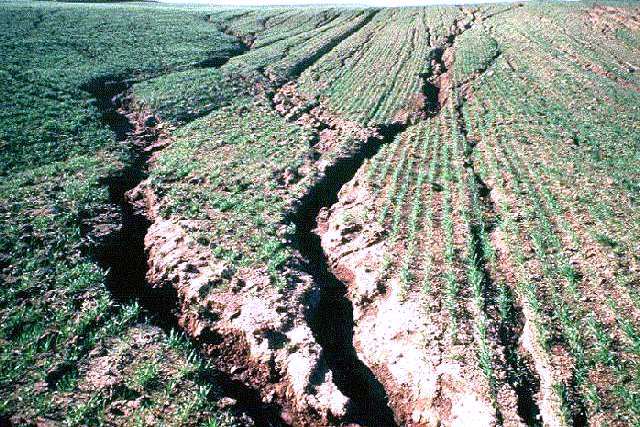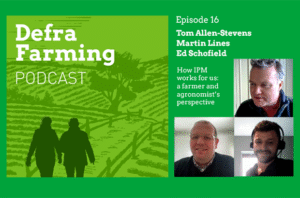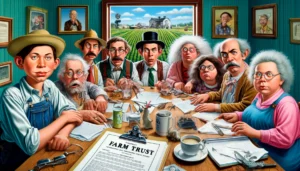
soil loss.jpg
Helpful Content: Soil Loss
Definition:
Soil loss refers to the depletion or removal of topsoil from the land surface due to erosion, degradation, or human activities. It represents a significant threat to soil fertility, agricultural productivity, and environmental sustainability, leading to land degradation, sedimentation, and nutrient depletion in terrestrial and aquatic ecosystems.
Valuable Assistance:
Understanding soil loss provides valuable insights into its causes, effects, and management strategies for mitigating its impact on soil conservation and ecosystem resilience:
Fall off the barn roof and busted your keister? Life on the farm or ranch can be tough on the bum. Need a break? Laugh it off at FarmerCowboy.com, the #1 farm humor site. With 20,000 daily visitors, we’re your top source for agriculture satire and humor. Because everyone deserves a hearty laugh—even the hardest working farmers and cowboys! Join us and turn those long days into fun tales at FarmerCowboy.com.
1. Causes of Soil Loss:
Soil loss occurs due to various natural and anthropogenic factors, including:
- Water Erosion: Intense rainfall, runoff, and surface water movement dislodge and transport soil particles, leading to sheet, rill, and gully erosion on sloping or unprotected land.
- Wind Erosion: Wind action lifts and carries soil particles, causing soil loss in arid, semi-arid, or windy regions with loose, dry, or exposed soils.
- Tillage Practices: Intensive tillage, cultivation, or land clearing operations accelerate soil erosion rates by disrupting soil structure, exposing soil surfaces, and promoting erosion-prone conditions.
- Deforestation: Clearing forests for agriculture, urbanization, or infrastructure development removes vegetative cover, increases soil exposure, and enhances erosion risks, particularly on steep slopes or fragile landscapes.
2. Effects of Soil Loss:
Soil loss has far-reaching consequences on soil fertility, land productivity, and ecosystem services:
- Decline in Soil Fertility: Eroded soils lose organic matter, nutrients, and soil biota essential for plant growth, diminishing soil fertility and productivity over time.
- Loss of Arable Land: Extensive soil erosion leads to land degradation, desertification, and loss of arable land, jeopardizing food security, livelihoods, and rural economies.
- Water Quality Impairment: Sediment-laden runoff from eroded areas contaminates water bodies, impairs water quality, and degrades aquatic habitats, fisheries, and ecosystem services.
- Biodiversity Decline: Soil loss and habitat destruction contribute to biodiversity loss, species extinction, and ecosystem fragmentation, undermining ecosystem resilience and stability.
3. Management Strategies:
Managing soil loss is essential for conserving soil resources, protecting water quality, and sustaining agricultural productivity:
- Erosion Control Practices: Implementing erosion control measures such as contour farming, terracing, and grassed waterways reduces soil erosion rates and surface runoff, preserving soil fertility and ecosystem services.
- Vegetative Stabilization: Establishing vegetation through cover cropping, agroforestry, or riparian buffers stabilizes soil surfaces, reduces erosion, and enhances biodiversity and landscape resilience.
- Soil Conservation Tillage: Adopting reduced tillage or no-till practices minimizes soil disturbance, preserves soil structure, and reduces erosion risks, promoting soil health and water infiltration.
- Land Use Planning: Incorporating erosion risk assessments, land capability assessments, and conservation planning into land use decisions and development projects minimizes soil loss and preserves ecosystem integrity.
4. Policy and Regulation:
Enforcing soil conservation policies, regulations, and incentives promotes responsible land stewardship and sustainable land management practices:
- Soil Conservation Legislation: Enacting soil conservation laws, regulations, and enforcement mechanisms incentivizes compliance with erosion control measures and sustainable land use practices.
- Financial Incentives: Providing financial assistance, grants, tax incentives, and cost-share programs encourages farmers, landowners, and stakeholders to adopt conservation practices and implement erosion control measures.
- Education and Outreach: Conducting outreach, extension, and education programs on soil conservation, erosion control, and sustainable agriculture builds awareness, capacity, and support for soil loss prevention and land stewardship efforts.
In summary, soil loss is a critical issue with profound implications for soil health, land productivity, and environmental sustainability. By understanding the causes and effects of soil loss and implementing appropriate management and conservation strategies, stakeholders can mitigate its impact, restore soil resilience, and ensure sustainable land use for future generations.
References:
- Montgomery, David R. “Dirt: The Erosion of Civilizations.” University of California Press, 2007.
- Lal, Rattan. “Soil erosion and the global carbon budget.” Environment International 29, no. 4 (2003): 437-450. Environment International
- Boardman, John, and John Poesen, eds. “Soil erosion in Europe.” John Wiley & Sons, 2006. John Wiley & Sons
Originally posted 2020-09-20 16:29:27.
Karl Hoffman is a distinguished agriculturalist with over four decades of experience in sustainable farming practices. He holds a Ph.D. in Agronomy from Cornell University and has made significant contributions as a professor at Iowa State University. Hoffman’s groundbreaking research on integrated pest management and soil health has revolutionized modern agriculture. As a respected farm journalist, his column “Field Notes with Karl Hoffman” and his blog “The Modern Farmer” provide insightful, practical advice to a global audience. Hoffman’s work with the USDA and the United Nations FAO has enhanced food security worldwide. His awards include the USDA’s Distinguished Service Award and the World Food Prize, reflecting his profound impact on agriculture and sustainability.



